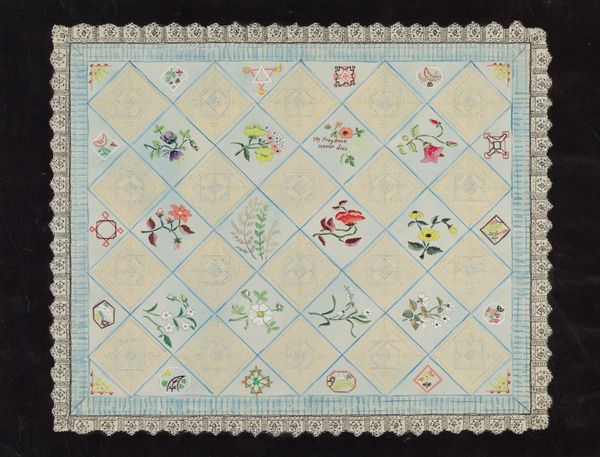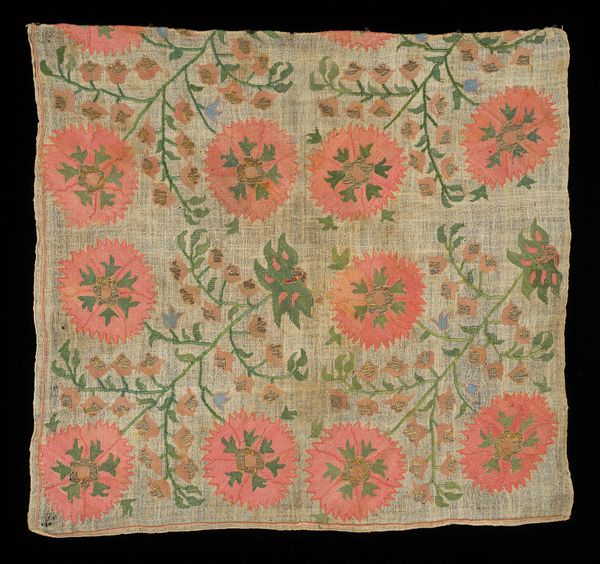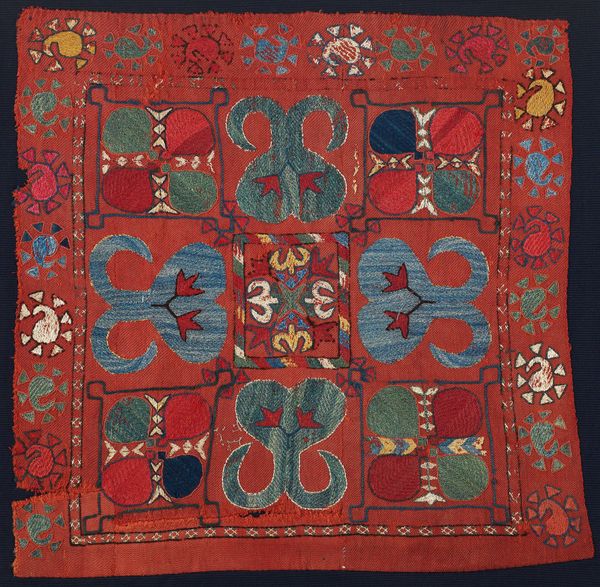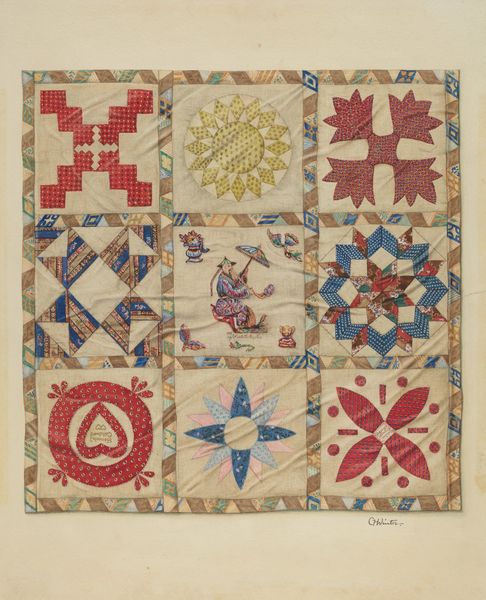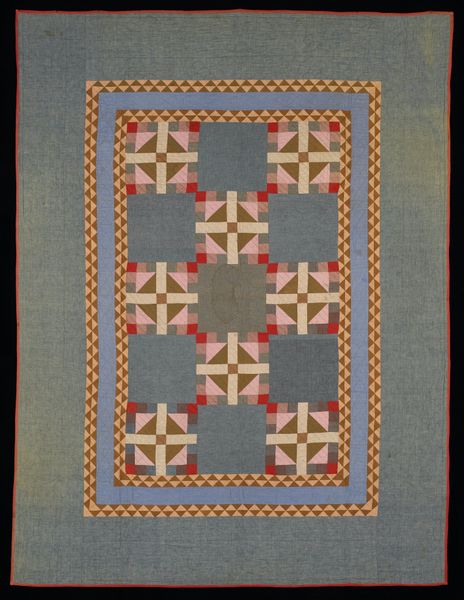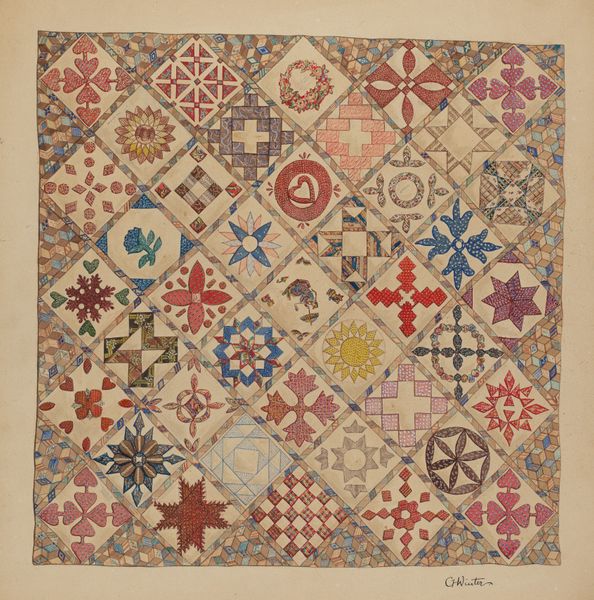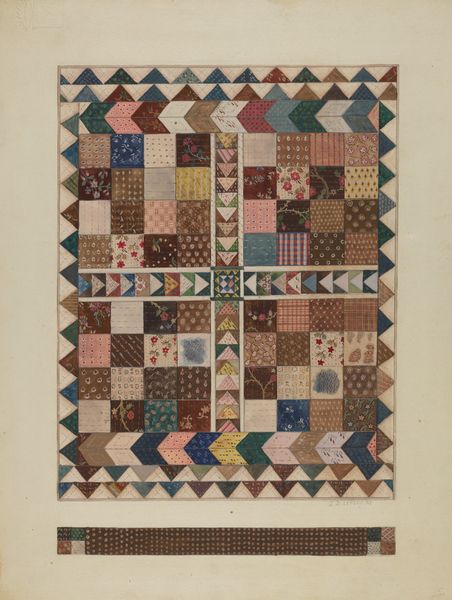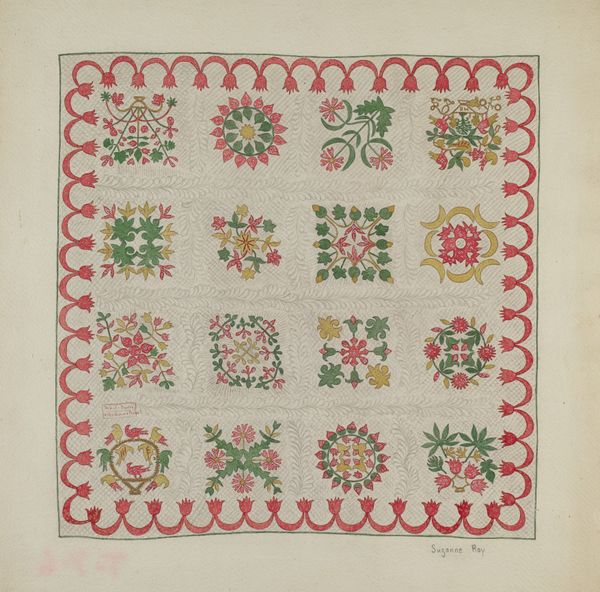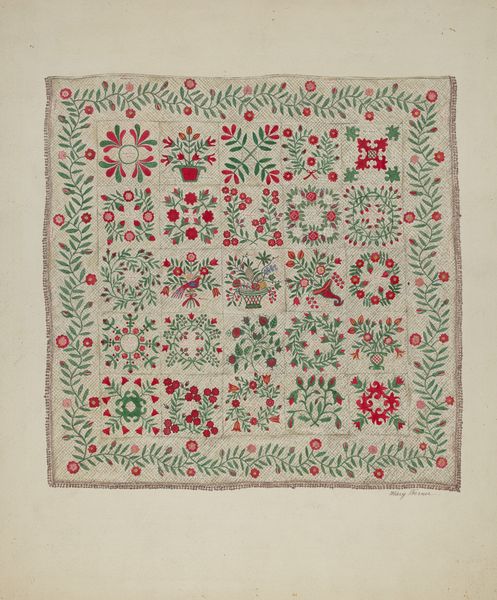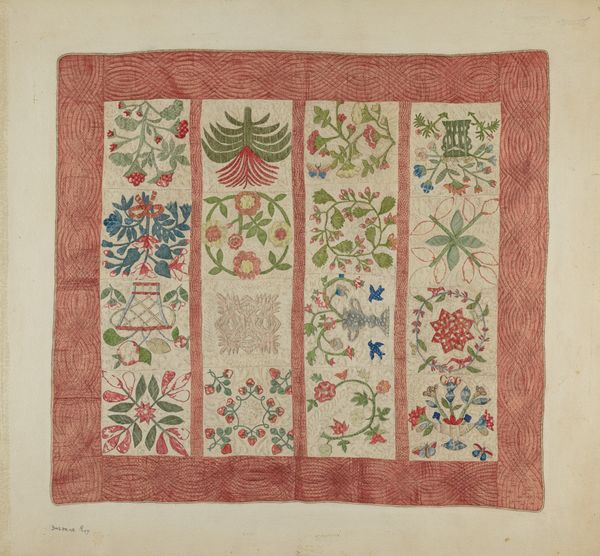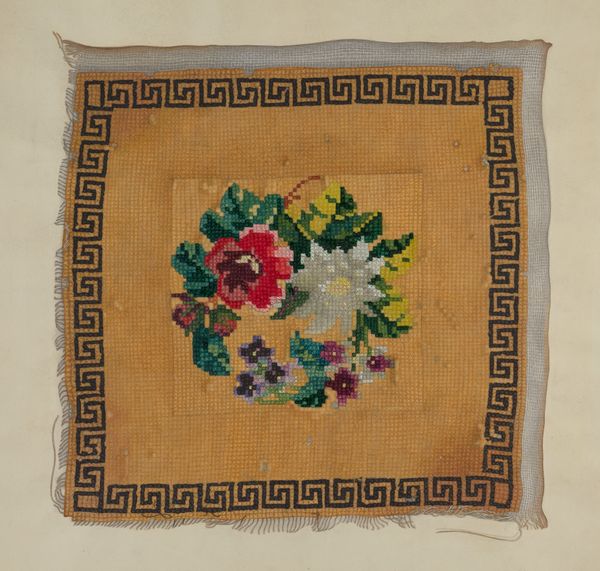
drawing, weaving, textile
#
drawing
#
weaving
#
textile
#
flower
#
text
#
geometric pattern
#
geometric
#
decorative-art
Dimensions: Framed: 20 1/8 x 20 1/8 in. (51.1 x 51.1 cm)
Copyright: Public Domain
Curator: Here we have a delicate embroidered darning sampler dating back to 1780. It's believed to have been created by Frances Boyce and currently resides at the Metropolitan Museum of Art. Editor: It's rather charming, in a homespun sort of way. I'm immediately drawn to the flower arrangement in the center; it's stylized but also incredibly detailed. The background has crosses dotted all over with some floral designs in the border. It almost feels like a little world contained within this square. Curator: Absolutely. Darning samplers like this were often exercises for young girls, meant to develop their needlework skills which were crucial for managing a household and ensuring its self-sufficiency. It's an intriguing look at how domestic skills intertwined with social expectations. Editor: I see those skills on display quite plainly. Look at the array of symbolic devices within those crosses! Different techniques, color schemes and the clear dedication for different textures... And then juxtapose it to the image of floral motifs framing the scene, symbols of innocence, youth, nature, all circling this craft. Curator: Exactly. We can read this piece on multiple levels, it's technically impressive while also providing insight into the educational and cultural practices of the time. Also consider where this was produced and what its cultural utility was back then. In essence, Frances Boyce was doing more than just practicing her needlework. She was, like other women of her era, fulfilling a social and cultural expectation. Editor: I'd add she was shaping a vocabulary! These textile motifs recur across eras and continents. Even today we look for patterns, and it arguably started right here in pieces such as Boyce's, defining domestic skills and cultural expectations. Curator: It's incredible to think of this piece as more than an item but almost as social and even political infrastructure within 18th century domesticity. Thanks to items like these we've preserved both history and visual culture, providing many clues about identity. Editor: So well-put. Now, when I gaze at it I understand that it goes beyond mere ornamentation; I feel the echoes of histories, skill, and visual language. Curator: Yes. When we contemplate these layers woven into a simple sampler, we realize we are dealing with a rather radical piece of art.
Comments
No comments
Be the first to comment and join the conversation on the ultimate creative platform.
